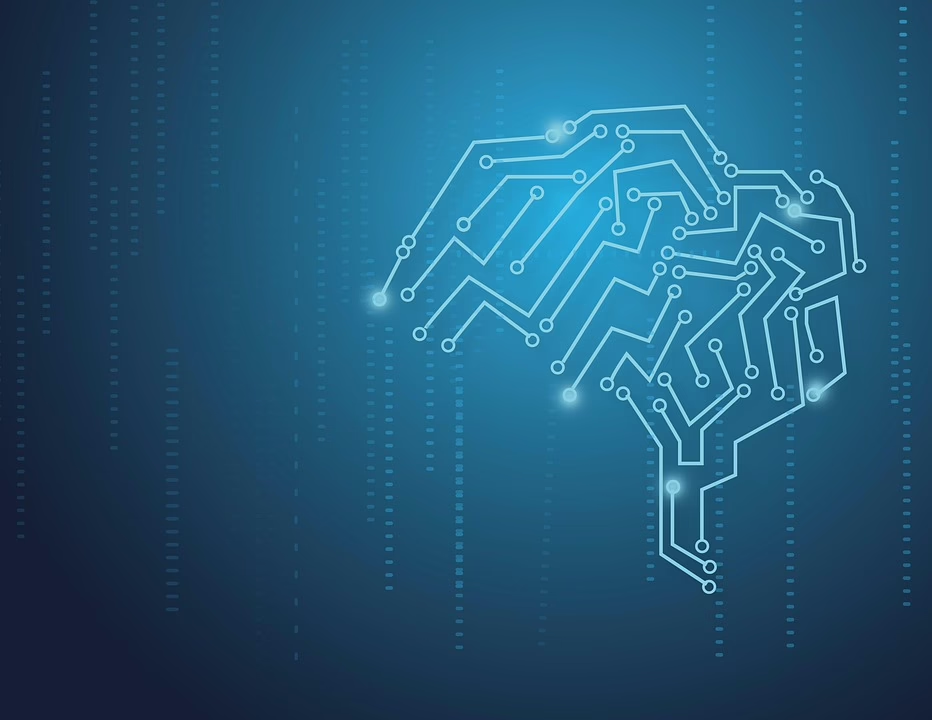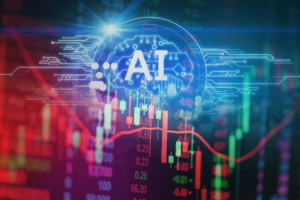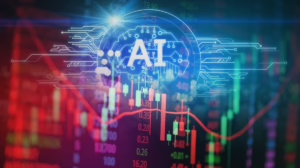Decoding AI: Understanding the Essence of Artificial Intelligence
Introduction to Artificial Intelligence
Artificial Intelligence (AI) has rapidly evolved from a theoretical concept into a transformative force reshaping industries, economies, and daily life. Understanding AI necessitates a multi-faceted approach that encompasses its history, core concepts, applications, and ethical considerations.
The Historical Context
The journey of AI began in the mid-20th century, with foundational figures like Alan Turing proposing theories about machine intelligence. The Turing Test, developed by Alan Turing in 1950, served as a benchmark for determining whether machines could exhibit human-like intelligence. Over the years, AI has gone through periods of optimism and disillusionment, often referred to as “AI winters” when funding and interest would dry up. Today, we find ourselves in an era of renewed interest and investment driven by advancements in machine learning, data availability, and computational power.
Core Concepts of AI
To decode AI, it’s essential to grasp its core components. These include machine learning, neural networks, natural language processing (NLP), and computer vision—each playing a vital role in the development of intelligent systems.
Machine Learning
Machine Learning (ML) is a subset of AI that enables systems to learn from data, identify patterns, and make decisions with minimal human intervention. Traditional programming involves explicit instructions to a computer, whereas ML allows computers to learn from examples and adapt over time.
Types of Machine Learning
-
Supervised Learning: In this type, the model is trained on labeled datasets, which means the input data is paired with the correct output. The model learns the relationship between the two, which allows it to make predictions on unseen data.
-
Unsupervised Learning: Here, the model works with unlabeled data, attempting to find hidden structures and patterns. This is often used for clustering similar items, such as grouping customers based on purchasing behavior.
-
Reinforcement Learning: This is inspired by behavioral psychology; models learn to make decisions by taking actions in an environment to maximize cumulative rewards. It’s widely used in scenarios like game playing and robotics.
Neural Networks
Neural networks, particularly deep learning models, have gained prominence due to their ability to learn from vast amounts of unstructured data. These systems mimic the human brain’s structure, using layers of interconnected nodes (neurons) to process input data.
Deep learning has achieved remarkable success in various tasks—from image and speech recognition to complex game strategies—largely due to the availability of large datasets and enhanced computational capabilities.
Natural Language Processing (NLP)
Natural Language Processing is a critical AI component enabling machines to understand, interpret, and generate human language. This field has become increasingly important with the advent of virtual assistants and chatbots. Applications range from sentiment analysis to language translation.
NLP employs techniques like tokenization, stemming, and the use of contextual embeddings (such as Word2Vec and BERT) to enhance the understanding of text. The goal is to bridge the gap between human communication and computer comprehension.
Computer Vision
Computer vision enables machines to interpret and make decisions based on visual data from the world. This technology involves recognizing images, detecting objects, and even understanding and generating visual content.
From facial recognition systems to self-driving cars, computer vision is integral to many modern applications, leveraging techniques like convolutional neural networks (CNNs) to achieve high accuracy and efficiency.
Applications of AI
AI’s potential is evident in various domains, ranging from healthcare to finance, and its applications are becoming increasingly prevalent.
Healthcare
AI technologies have the potential to revolutionize healthcare through improved diagnostics, personalized treatment plans, and enhanced patient care.
-
Diagnostics: Algorithms trained on medical imaging datasets can identify diseases like cancer more accurately than some human experts. For instance, Google’s DeepMind developed an AI system that can detect over 50 types of eye diseases from retinal scans.
-
Personalized Medicine: AI can analyze patient data to recommend tailored treatment options. Machine learning models can predict how individual patients might respond to different medications, optimizing their treatment strategies.
-
Operational Efficiency: Automating administrative tasks, like scheduling appointments or managing billing, allows healthcare professionals to focus more on patient care.
Finance
In finance, AI transforms how banks operate and interact with clients.
-
Fraud Detection: Machine learning models analyze transaction patterns to detect anomalies indicative of fraudulent activity, minimizing losses for financial institutions.
-
Algorithmic Trading: AI systems analyze market data in real time to make high-frequency trading decisions, capitalizing on small market inefficiencies.
-
Customer Service: Chatbots enhance customer experience by providing instant responses to queries, facilitating 24/7 customer support without the need for human intervention.
Transportation
AI’s impact on transportation is perhaps most visible in the development of autonomous vehicles.
-
Self-Driving Cars: With advancements in sensor technology and machine learning algorithms, autonomous vehicles can navigate complex environments, making decisions in real time.
-
Traffic Management: AI-driven systems optimize traffic flow in urban areas, reducing congestion and improving safety by analyzing data from traffic cameras, sensors, and GPS devices.
Entertainment
The entertainment industry leverages AI to enhance user experience and optimize content delivery.
-
Content Recommendation: Streaming platforms like Netflix and Spotify use AI to analyze user preferences and viewing habits to recommend personalized content.
-
Content Creation: AI can generate music, art, and writing, challenging traditional notions of creativity and authorship.
Ethical Considerations
While AI presents numerous benefits, it also poses significant ethical challenges that must be addressed to ensure its responsible development and deployment.
Bias and Fairness
One of the most pressing ethical issues is algorithmic bias. AI systems trained on biased data can perpetuate and even exacerbate social inequalities, leading to unfair treatment in areas like hiring or law enforcement.
Efforts to combat this bias include employing diverse datasets and developing algorithms that can identify and mitigate bias in real time.
Privacy
AI systems often require vast amounts of personal data to function effectively. This raises concerns about user privacy and data security, especially when it comes to sensitive information.
Implementing robust data protection measures and adhering to privacy regulations (like GDPR) are crucial for ensuring that user data is handled ethically.
Accountability
As AI systems become increasingly autonomous, the question of accountability arises. Who is responsible when an AI system makes a mistake or causes harm?
Establishing clear guidelines for accountability and transparency is vital to ensure that users can understand how decisions are made and have recourse in cases of error.
Human Impact
Automation powered by AI raises questions about job displacement and the future of work. While AI can enhance productivity, it may also render certain jobs obsolete.
Balancing the benefits of automation with the potential for job loss requires proactive measures, such as reskilling workers and creating new job opportunities in emerging fields.
The Future of AI
The future of AI holds immense promise and challenges alike. As technology continues to evolve, various trends will likely shape its trajectory.
Advancements in General AI
Currently, most AI systems are examples of “narrow AI,” specialized for specific tasks. Future research aims to develop “general AI,” systems with human-like cognitive abilities capable of performing a wide range of tasks. Achieving this goal would fundamentally alter our relationship with machines.
Collaborative AI
Integrating AI into human workflows—creating systems that complement human abilities—is another exciting avenue for future development. Collaborative AI aims to enhance human intelligence rather than replace it, fostering a synergy that can lead to greater innovation and efficiency.
Regulating AI
As AI’s influence grows, so does the necessity for effective regulation. Policymakers must create frameworks that prioritize innovation while ensuring ethical standards, privacy protection, and accountability.
Societal Impact
AI has the potential to address significant global challenges, from climate change to healthcare access. Leveraging AI responsibly can lead to sustainable solutions that enhance quality of life worldwide.
Conclusion
Decoding AI requires understanding its core components, applications, and the ethical considerations surrounding its development. As we navigate the complexities of this transformative technology, it is crucial to foster an informed dialogue that prioritizes responsible practices while harnessing AI’s immense potential. The essence of AI is not merely in the technology itself but in how we choose to shape its integration into our world, ensuring it serves as a tool for positive change and advancement.
References
- Russell, S., & Norvig, P. (2020). Artificial Intelligence: A Modern Approach. Pearson.
- Goodfellow, I., Bengio, Y., & Courville, A. (2016). Deep Learning. MIT Press.
- Chollet, F. (2017). Deep Learning with Python. Manning Publications.
- Turing, A. M. (1950). Computing Machinery and Intelligence. Mind, 59(236), 433-460.


























Add Comment